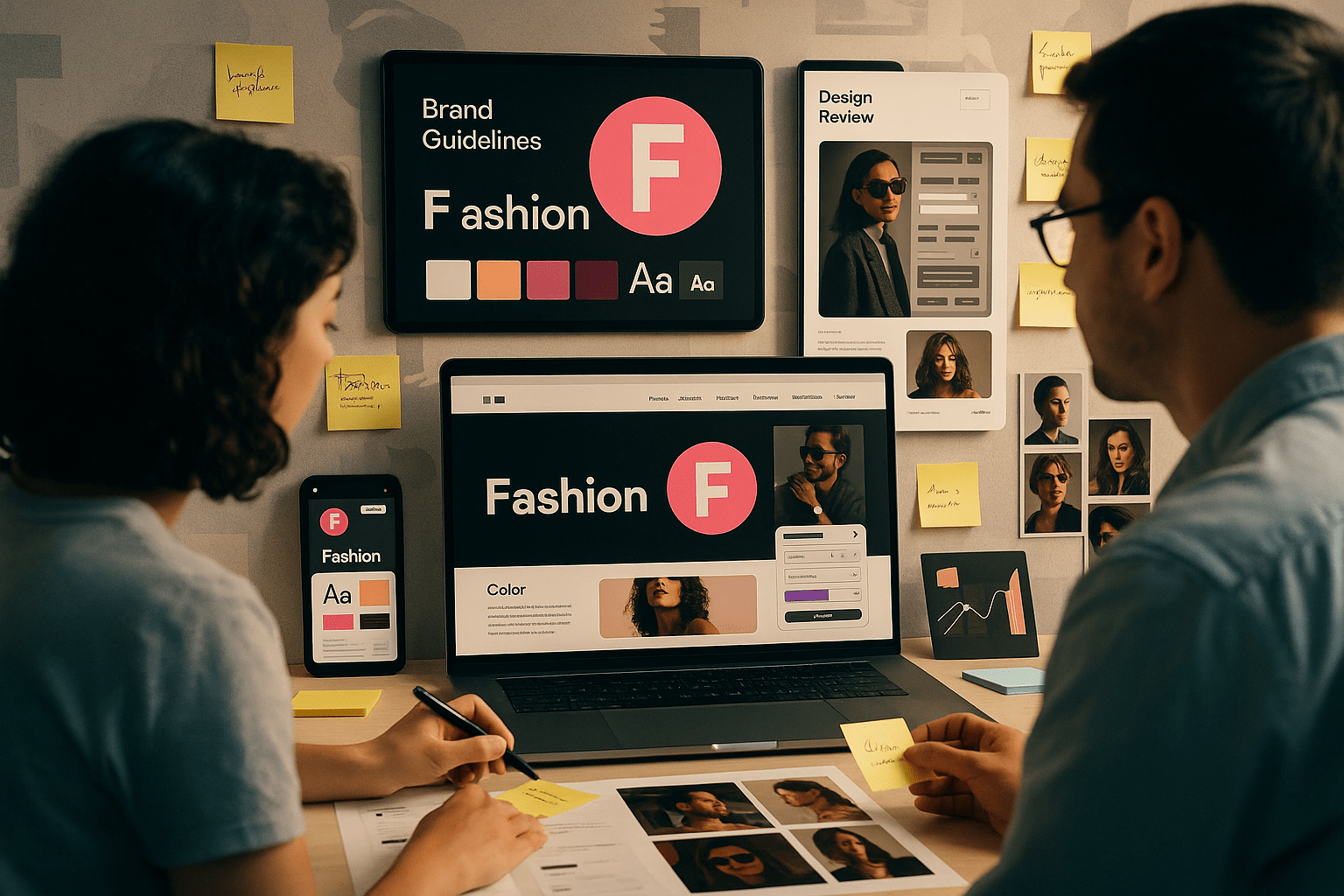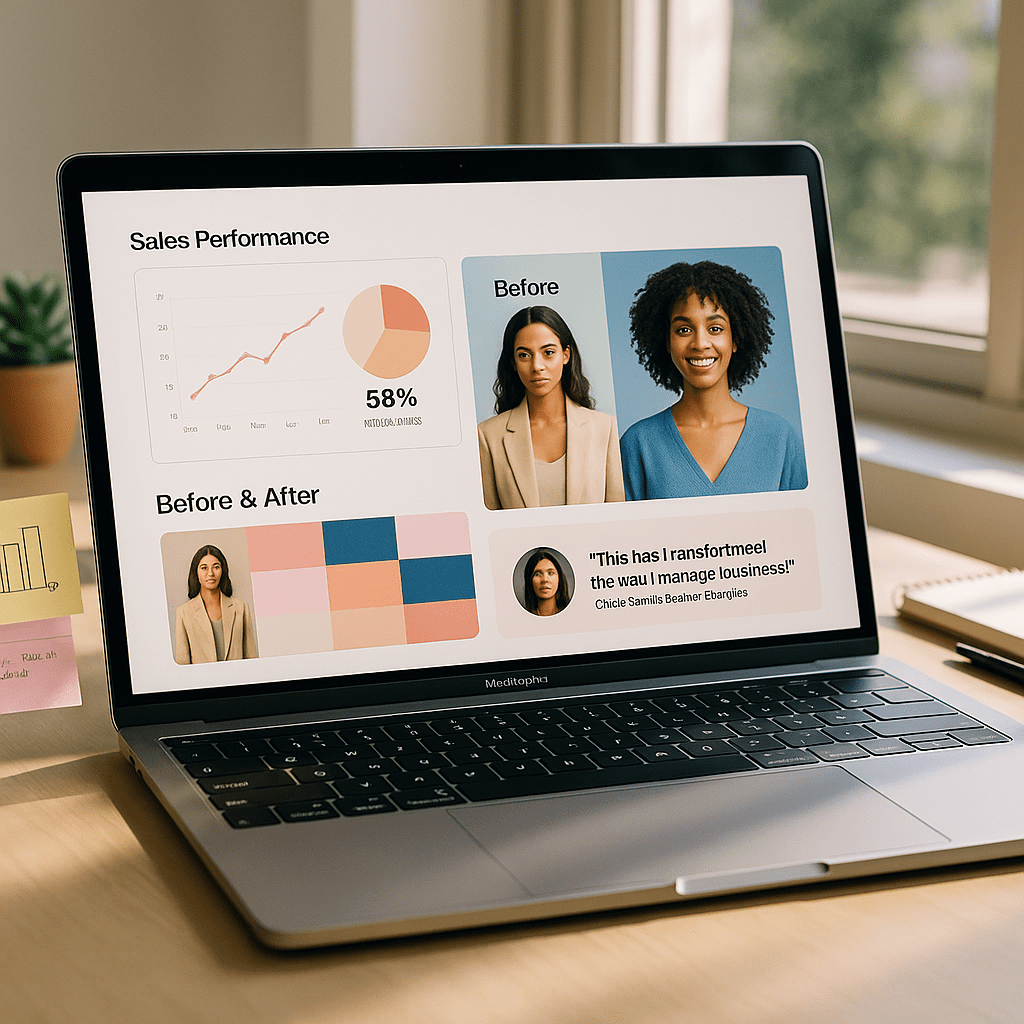Unlocking Fashion Brands Growth with Graphic Design
by Design Delulu Editorial · September 19, 2025

In today's hyper-competitive fashion landscape, standing out from the crowd isn't just about having the latest trends or premium fabrics. Fashion brands are discovering that strategic graphic design is the secret weapon that transforms ordinary brands into iconic, recognizable powerhouses. From emerging designers to established fashion houses, graphic design serves as the visual language that communicates brand identity, builds customer loyalty, and drives sustainable growth.
The fashion industry moves at breakneck speed, with consumer preferences shifting faster than ever before. In this environment, brands that fail to invest in compelling visual identity risk becoming invisible in a sea of competitors. Graphic design isn't just about making things look pretty—it's about creating a cohesive visual ecosystem that resonates with target audiences and builds lasting brand equity.

Why Fashion Brands Need Graphic Design
Key Challenges Fashion Brands Face
Fashion brands today navigate a complex web of challenges that directly impact their ability to connect with consumers and drive sales. The digital transformation has fundamentally changed how customers discover, evaluate, and purchase fashion items, creating new obstacles for brands trying to establish their presence.
Brand Differentiation Crisis: With thousands of fashion brands launching annually, consumers face an overwhelming array of choices. Many brands struggle to articulate what makes them unique, resulting in generic visual identities that fail to capture attention or build emotional connections with potential customers.
Inconsistent Brand Experience: Fashion brands often operate across multiple touchpoints—from physical stores and e-commerce websites to social media platforms and packaging. Without cohesive graphic design standards, brands risk creating fragmented experiences that confuse customers and weaken brand recognition.
Digital-First Consumer Behavior: Modern consumers make purchase decisions based on visual impressions formed within seconds of encountering a brand online. Fashion brands must compete not just with direct competitors, but with every other brand vying for attention in crowded digital spaces.
How Graphic Design Solves These Challenges
Strategic graphic design addresses these pain points by creating a unified visual language that cuts through marketplace noise and establishes clear brand positioning. Professional graphic design transforms abstract brand concepts into tangible visual elements that customers can immediately recognize and connect with emotionally.
Visual Hierarchy and Brand Recognition: Well-designed logos, typography systems, and color palettes create instant brand recognition across all customer touchpoints. When customers see consistent visual elements, they develop trust and familiarity that translates into purchase decisions and brand loyalty.
Storytelling Through Design: Fashion is inherently aspirational, and graphic design provides the tools to tell compelling brand stories that resonate with target audiences. Through carefully crafted visual narratives, brands can communicate their values, heritage, and vision in ways that words alone cannot achieve.
Competitive Advantage: Exceptional graphic design creates barriers to entry for competitors while establishing premium positioning in the marketplace. Brands with sophisticated visual identities command higher prices and customer loyalty compared to those with generic or amateur design approaches.

Essential Features of Graphic Design for Fashion Brands
Must-Have Design Elements and Workflows
Successful fashion brand graphic design encompasses several critical components that work together to create cohesive brand experiences. These elements form the foundation of all brand communications and customer interactions.
Logo Design and Brand Mark Systems: The cornerstone of fashion brand identity, logos must be versatile enough to work across diverse applications while maintaining visual impact. Effective fashion logos often incorporate elements that reflect the brand's aesthetic philosophy, whether minimalist elegance, bold streetwear attitude, or luxury sophistication.
Typography Hierarchies: Fashion brands require sophisticated typography systems that reflect brand personality while ensuring readability across all applications. Primary typefaces establish brand character, while supporting fonts provide flexibility for various content types and design contexts.
Color Psychology and Palette Development: Color choices in fashion branding go beyond aesthetic preferences—they communicate brand values and emotional positioning. Luxury brands often leverage monochromatic palettes with metallic accents, while contemporary brands might embrace bold, trend-forward color combinations.
Packaging and Product Presentation: Fashion products require packaging design that protects items while creating unboxing experiences that reinforce brand values. From hang tags and labels to shipping materials and gift packaging, every touchpoint contributes to overall brand perception.
Real-World Applications
Leading fashion brands demonstrate how strategic graphic design translates into measurable business results. Consider how established brands use consistent visual systems across product catalogs, social media content, retail environments, and digital platforms to create seamless brand experiences.
E-commerce Integration: Online shopping experiences require graphic design elements that facilitate easy navigation, highlight product features, and build confidence in purchase decisions. Product photography styling, website layout design, and user interface elements all contribute to conversion rates and customer satisfaction.
Social Media Brand Building: Fashion brands rely heavily on visual platforms like Instagram and Pinterest to showcase products and build communities. Consistent graphic design standards ensure that every social media post reinforces brand identity while engaging target audiences effectively.

Common Mistakes to Avoid
Typical Pitfalls in Fashion Brand Graphic Design
Many fashion brands make costly design mistakes that undermine their marketing efforts and limit growth potential. Understanding these common pitfalls helps brands make informed decisions about their visual identity investments.
Following Trends Over Brand Identity: While fashion brands must stay current, chasing every design trend dilutes brand identity and confuses customers. Successful brands establish timeless core design elements while incorporating contemporary touches that reflect current aesthetics without compromising brand recognition.
Inconsistent Visual Application: Creating beautiful brand guidelines means nothing if they're not consistently implemented across all touchpoints. Brands often invest in professional logo design but fail to maintain standards in day-to-day marketing materials, packaging, and digital content.
Neglecting Mobile-First Design: With mobile commerce dominating fashion sales, brands must prioritize mobile-optimized design elements. Logos that don't scale properly, typography that's difficult to read on small screens, and navigation elements that don't translate to touch interfaces can severely impact customer experience and sales.
How to Do Better
Invest in Comprehensive Brand Systems: Rather than treating graphic design as a series of isolated projects, fashion brands should develop comprehensive visual systems that provide guidelines for every possible application. This upfront investment pays dividends through consistent brand experiences and reduced long-term design costs.
Test Design Elements with Target Audiences: Fashion brands should validate design decisions through customer feedback and testing before full implementation. What looks appealing to internal teams may not resonate with actual customers, and early testing prevents costly mistakes.
Plan for Scalability: As fashion brands grow, their design systems must accommodate new product lines, international markets, and additional touchpoints. Building flexible design frameworks from the beginning prevents the need for expensive rebranding exercises later.
SEO / Growth Best Practices
Optimization Tips Specific to Fashion Brands
Fashion brands can leverage graphic design elements to improve search engine visibility and drive organic traffic growth. Visual content plays an increasingly important role in SEO, particularly for fashion brands that rely on visual appeal to attract customers.
Image Optimization for Search: Fashion brands produce extensive visual content that can drive significant organic traffic when properly optimized. High-quality product images, lifestyle photography, and branded graphics should include descriptive filenames, alt text, and structured data markup to improve search engine visibility.
Visual Content for Featured Snippets: Search engines increasingly display visual results for fashion-related queries. Brands that create infographics, style guides, and visual tutorials optimized for featured snippets can capture valuable search real estate and drive targeted traffic.
Brand Consistency Across Digital Touchpoints: Search engines reward brands that provide consistent user experiences across all digital properties. Cohesive graphic design elements help establish brand authority and improve overall domain performance in search results.
Leveraging Graphic Design for Visibility and Results
Social Proof Through Design: Professional graphic design communicates credibility and trustworthiness that influences customer behavior and search engine rankings. Well-designed websites and marketing materials typically achieve better engagement metrics, which positively impact SEO performance.
Content Marketing Integration: Fashion brands can repurpose graphic design elements into shareable content that attracts backlinks and social media engagement. Style guides, trend reports, and visual tutorials that incorporate brand design elements can drive significant organic traffic while reinforcing brand identity.
Local SEO for Fashion Retailers: Brick-and-mortar fashion retailers can use consistent graphic design elements across online directories, Google My Business profiles, and local marketing materials to improve local search visibility and drive foot traffic to physical locations.
Conclusion
Graphic design represents far more than aesthetic enhancement for fashion brands—it's a strategic business investment that drives growth, builds customer loyalty, and creates sustainable competitive advantages. In an industry where visual appeal directly correlates with commercial success, brands that prioritize comprehensive graphic design systems position themselves for long-term prosperity.
The most successful fashion brands understand that every visual touchpoint represents an opportunity to strengthen brand perception and drive customer action. From initial logo design to comprehensive brand system implementation, strategic graphic design creates the foundation for all other marketing and growth initiatives.
Fashion brands ready to unlock their growth potential through strategic graphic design will find that the investment pays dividends across every aspect of their business, from improved customer acquisition and retention to enhanced brand valuation and market positioning.
👉 Ready to improve your fashion brands with graphic design? Explore Graphic Design at Design Delulu